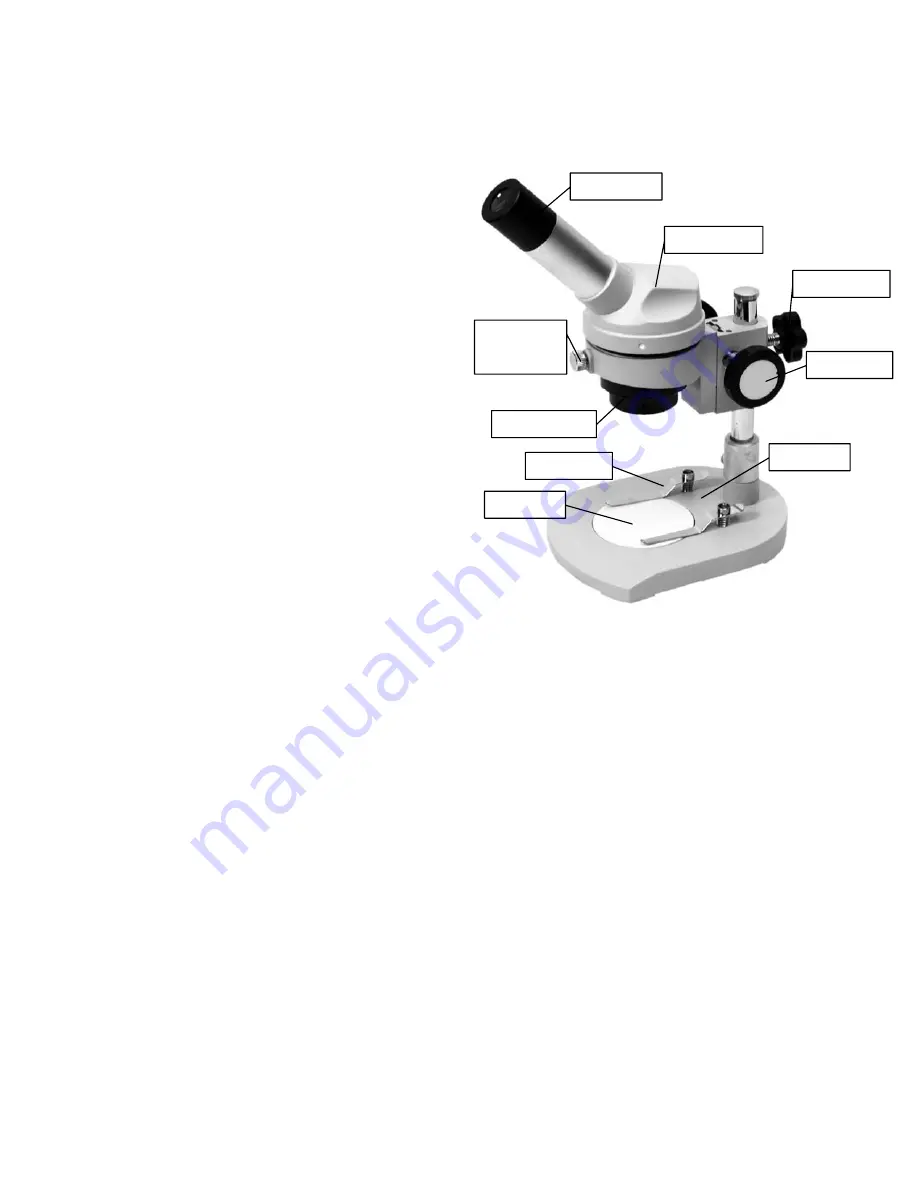
©
Home Training Tools Ltd. 2005 Page 2 of 4
Visit www.homesciencetools.com
Welcome to an exciting world of
discovery with your new Explorer
Microscope!
This low-power microscope is
designed for viewing whole objects, such as
flowers, rocks, or insects. This manual will give
you a familiarity with the different features of
your microscope, how to use them, and how to
preserve your investment by proper
maintenance and care.
Table of Contents
Table of Contents................................................. 2
General Microscope Care .................................... 2
Unpacking......................................................... 2
Cleaning ........................................................... 2
Features & Definitions.......................................... 2
Microscope Diagram......................................... 2
Description of Components .............................. 2
Operating Procedure............................................ 3
Maintenance......................................................... 3
Adjusting Tension ............................................. 3
Warranty............................................................... 4
General Microscope Care
Unpacking
Your Explorer microscope is shipped in a
two-part Styrofoam case. Keep this case for
storage, transport, and shipping. It is perfect
packing material should you ever need to send
your microscope in for repairs covered by the
warranty.
Avoid touching the lens surfaces on the
eyepiece or objective lens, as finger prints will
decrease image quality.
Cleaning
The best optical quality can be
compromised by dirty lenses. Using a dustcover
and cleaning the lenses regularly will greatly
enhance your microscope use.
To clean lens surfaces, remove dust by
using a soft brush or a can of compressed air.
Then moisten a piece of lens paper (our item MI-
PAPER) with some lens cleaning solution (MI-
LENSCLN). Gently clean the eyepiece and
objective lens exterior surface using a circular
motion. Repeat with a second paper moistened
with solution if necessary. Repeat once again
with a piece of dry lens paper until the lens is
clean and dry.
Do not spray lens cleaner
directly on the lens.
Features & Definitions
Microscope Diagram
Description of Components
1.
Eyepiece:
This is the part of the microscope
that you look through. It is inclined at a 45º
angle for comfortable viewing. It contains a
lens that magnifies 10x.
2.
Rotating head:
The head rotates 360º so
that multiple users can look in the eyepiece
comfortably without moving the microscope
itself. To rotate, loosen the head set screw.
3.
Locking knob:
The head is mounted on a
post and can be raised, lowered, or turned
around by loosening the locking knob on the
back of the post.
4.
Focus knob:
This knob is used to raise or
lower the objective lens until the image is in
focus.
5.
Head set screw:
Loosen this screw to
rotate the head.
6.
Objective lens:
This is the lens closest to
the specimen. Its magnification of 2x
multiplies with the 10x of the eyepiece to
provide total magnification of 20x.
1. Eyepiece
2. Rotating head
3. Locking knob
4. Focus knob
6. Objective lens
5. Head set
screw
7. Stage
8. Stage clips
9. Stage plate


















